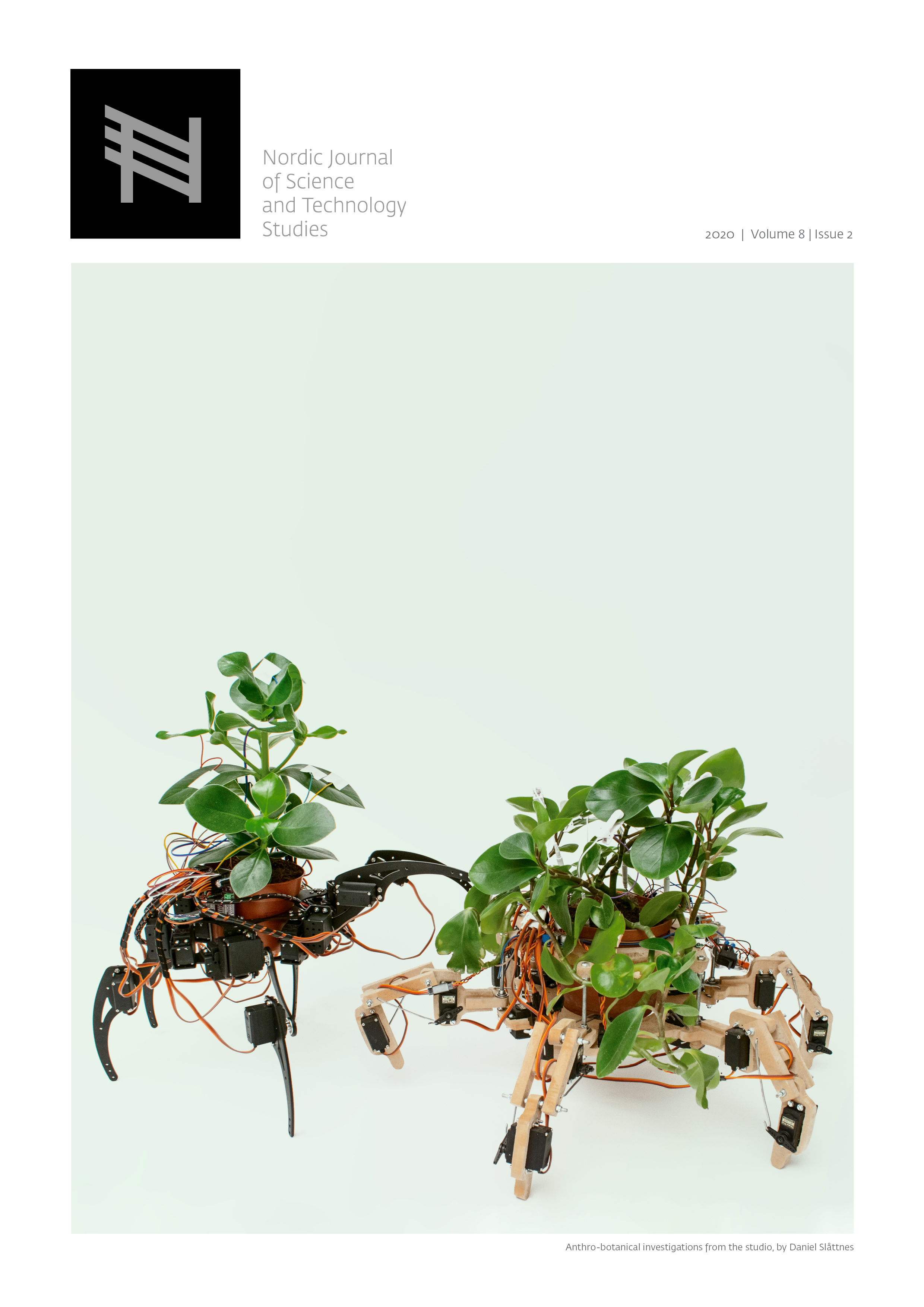Mediating imaginaries
Educational robots and collective visions of the future
DOI:
https://doi.org/10.5324/njsts.v8i2.3560Abstract
The aim of this article is to illustrate how visions of the future—sociotechnical imaginaries— mediate and thus shape sociotechnical practices involving educational robots in a Danish school context. In the analysis I show how imaginaries are manifested both in technological artefacts, teachers’ discourse and in policy documents from political bodies such as the OECD and the Danish Agency for Digitisation (DIGST). To show this manifestation, I apply two concepts: The Science and Technology Studies (STS) concept of ‘sociotechnical imaginaries’ as formulated by Sheila Jasanoff (2015) and the concept of ‘mediation’ known from postphenomenological tradition. I develop an analytical framework based on these two concepts and coin a third — ‘symbolic mediation’ — to present and analyse a case study based on an ethnographic field study that included semi-structured interviews conducted in a Danish school setting. The case study shows how the use of the robot NAO—an educational technology—is driven by two related imaginaries that both serve as arguments for implementing and using the robot—the imaginary of the digital future and the imaginary of educational optimization.
Downloads
Downloads
Published
Issue
Section
License
Copyright (c) 2020 Oliver Tafdrup

This work is licensed under a Creative Commons Attribution 4.0 International License.
All content in NJSTS is published under a Creative Commons Attribution 4.0 license. This means that anyone is free to share (copy and redistribute the material in any medium or format) or adapt (remix, transform, and build upon the material) the material as they like, provided they give appropriate credit, provide a link to the license, and indicate if changes were made.






